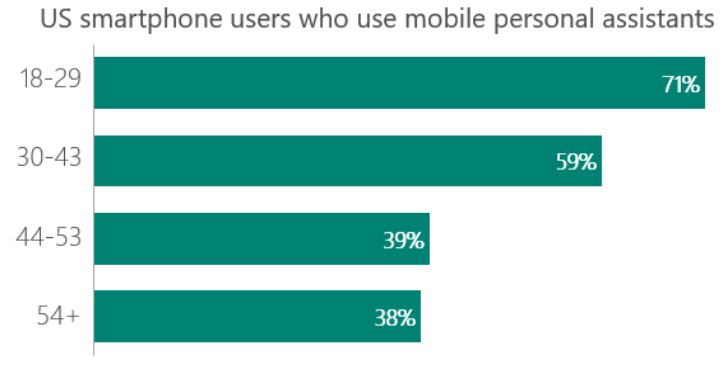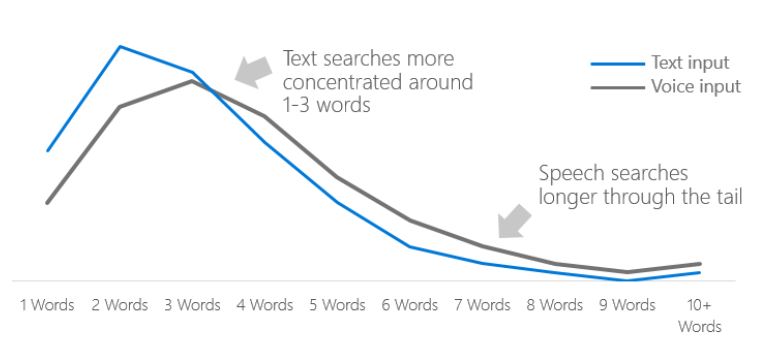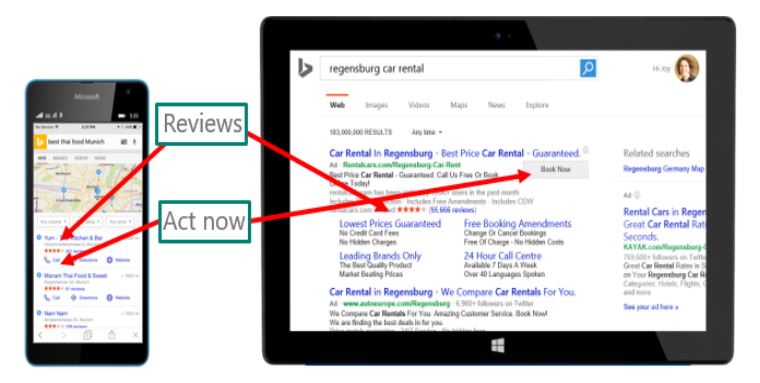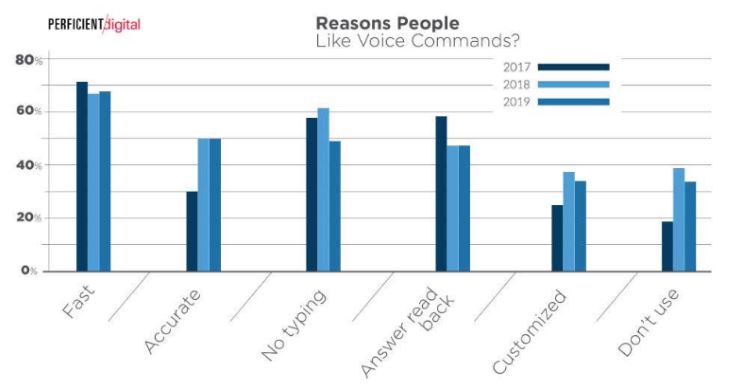Voice search has gained traction over the years because, unlike typing, speaking with an assistant is more convenient. Plus, the search results are quick, concise, and to the point.
Check out these popular statistics highlighting how voice search has come to stay;
- After a survey of SEO trends in 2017 and beyond, it was number 3.
- According to a keynote address by CEO of Google, Sundar Pichai, “one out of five Google search queries are searched by voice.”
- Teenagers are the highest users of voice search. But according to thrive analytics “everyone uses personal assistants, regardless of the age group.”

Where is Voice Search Used?
People use it everywhere- on the go, with friends, families. Even sitting on the toilet!
Since the use of a digital assistant has skyrocketed over the years, optimizing for voice search is critical for your website’s SEO success.
Technically it is a Dialogue System
Yes, you heard that right! Voice search is a dialogue system, an advanced dialogue system that is getting better and better every day.
What is a Dialogue System?
A dialogue system is a digital set up created to dialogue with human beings. A dialogue system uses several communication modes like speech and text as an input/output signal. Current algorithms are getting better at communicating, predicting, and learning through the massive amounts of data fed into them every day.
How is Voice Search Different from Traditional Search?
There’s a big difference between speaking your question or query into a device and typing the query on your device.
Here are the differences:
Keywords Are Longer And More Conversational
Whenever we speak with a smart device and make queries, we usually ask the question as a whole rather than use a few dedicated keywords.
For example, on a desktop, we might type “prepare coffee” or “coffee recipe.” Here are statistics representing the average number of words for typing searches.
But using your voice it’s different. We might say, “How can I prepare my coffee at home?”
The length of keywords for the above two searches is noticeably different, with verbals searches being longer and more interactive than the traditional typing method.
According to Purna Virji, a popular PPC expert at Microsoft, “voice queries are a much conversational option compared to text queries.”
Voice Queries are Common in Local Listing Searches
The most common voice search request consists mainly of “near me” questions, as well as questions about things and time: ‘Where is the closest McDonalds?’ or ‘What are Home Depot hours?’ These results show up in local listings.
From your own experience you can see many people use this search method to find a place to visit, restaurant to eat, resort to relax, and more.
More recently people are there mobile devices to search not only about these locations, but in public locations like restaurants, restrooms, theaters, and more. Not surprisingly, these searches are for other local businesses and information related to them.
The Results are Crisp and Concise
Results given by the systems are usually the featured snippets that we see when we are typing searches. You know those little highlighted boxes that seem to answer exactly what you were asking without having to leave Google.
The way Google does this is it utilizes rich snippets and knowledge graphs to provide answers to voice search (more details on that to follow).
The premise is anyone using their voice to search for information wants a quick answer, and that’s how voice search works.
Why Is Voice Search Growing So Quickly?
Lots of reasons, but the main one is convenience.
Let’s take, for example, you’re in the middle of a DIY craft painting session and missed a step. You don’t want to use your stained hands on your smartphone.
Think of an easy way out? Use your voice.
‘Hey Siri’ or ‘OK Google’ and you get the answer you need.
1. It’s Easier and Faster
Voice search is undoubtedly quicker than a typical traditional way of searching for a query, and that’s the major reason why many people are beginning to adopt the trend.
2. It’s More Convenient
In today’s world, time is money. Many people don’t have the time to type their queries. When it’s only a few words away to the answer, people tend to thread the easier road.
If we were asked to choose between speaking and typing when searching for long-tail keywords like “which Country is the biggest in the world after the United States,” we obviously would go for the “speaking” option.
3. It’s Perfect for Mobile
This is probably the key reason why voice search has grown so quickly and viral among people today. Smartphones have paved the way for search assistants because many mobile users leverage voice search more than they do with typing.
The vast majority of voice searches are done on mobile, and 59% of total searches are made by mobile users. This statistic focuses on how critical mobile is when it comes to voice search; mobile holds the key to the future of voice search.
Since we now understand how voice search works and its different features, we also need to learn how to do keyword research for voice queries.
What’s Next?
Next week we’ll talk about how to do keyword research for voice. Can’t wait? Get in touch with us today and we’d love to help you on your digital journey.
About The Author
Marketing Team
The AOK Marketing Team is a diverse group of amazing individuals driven to help all of our clients succeed. Great people are everywhere, and we believe that people should control their workday, their work environment, and where they live. We have team members in 9 countries: United States, Canada, Egypt, Belgium, Ireland, Australia, India, Pakistan, and Hong Kong.
How can we help you?









